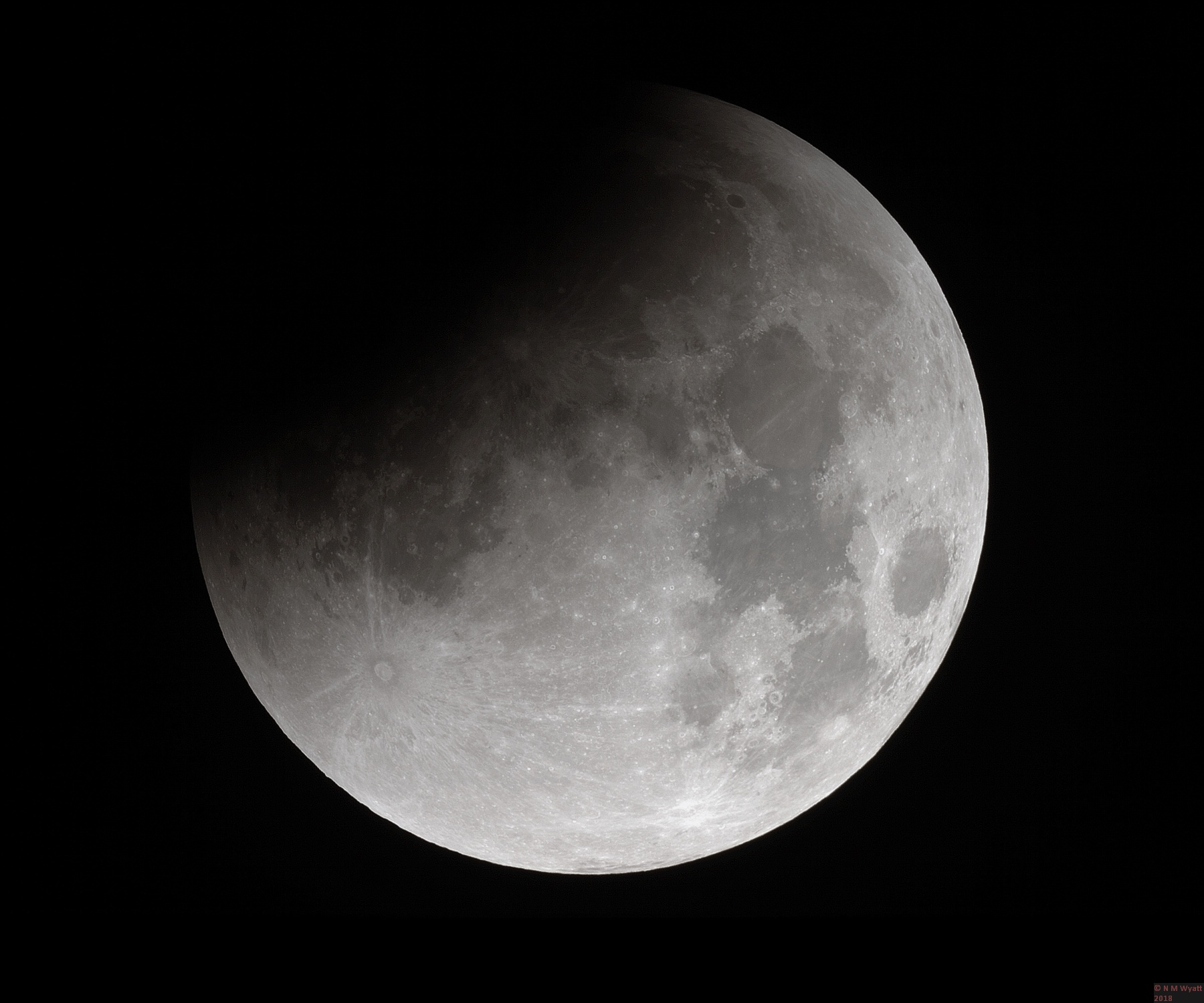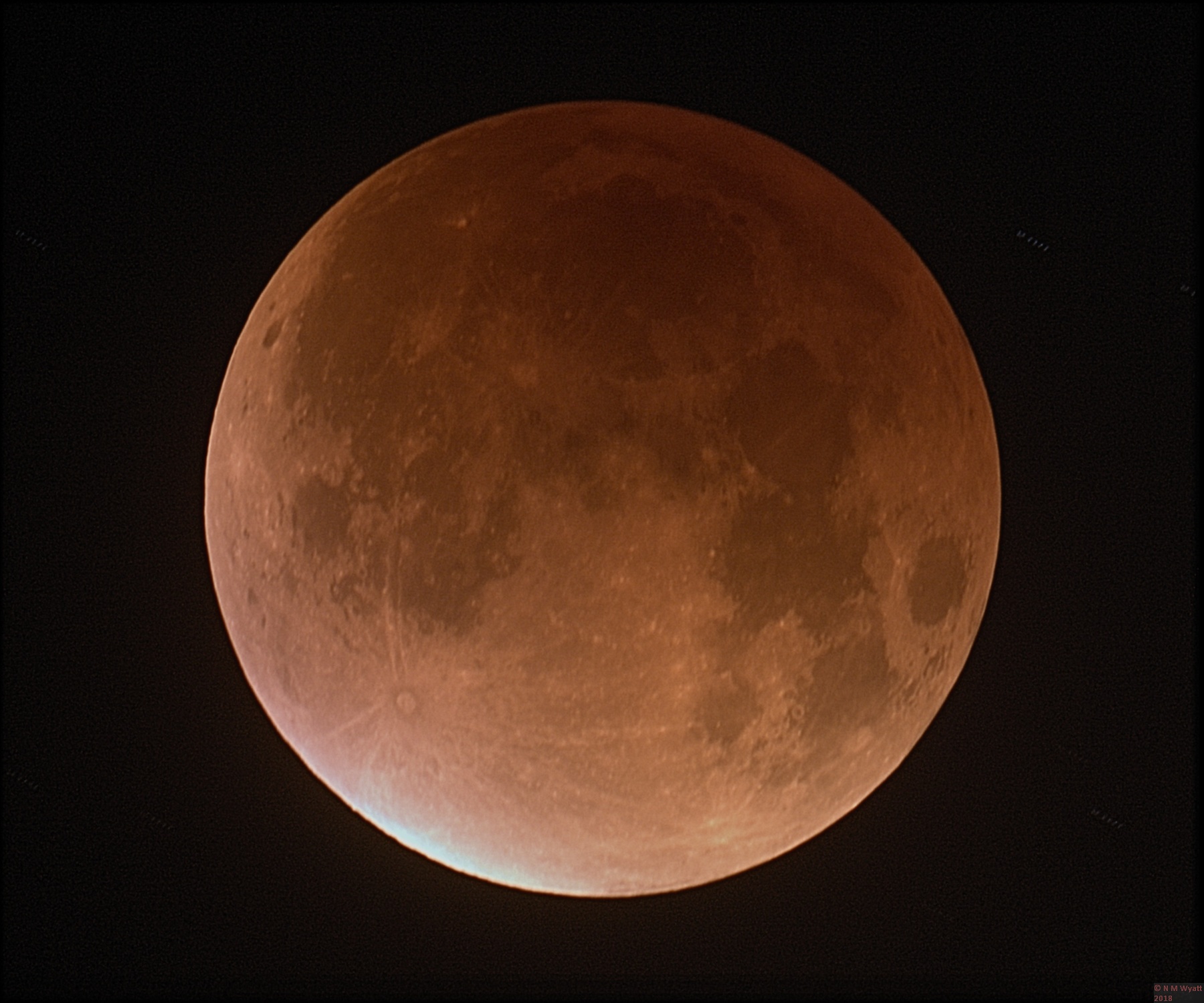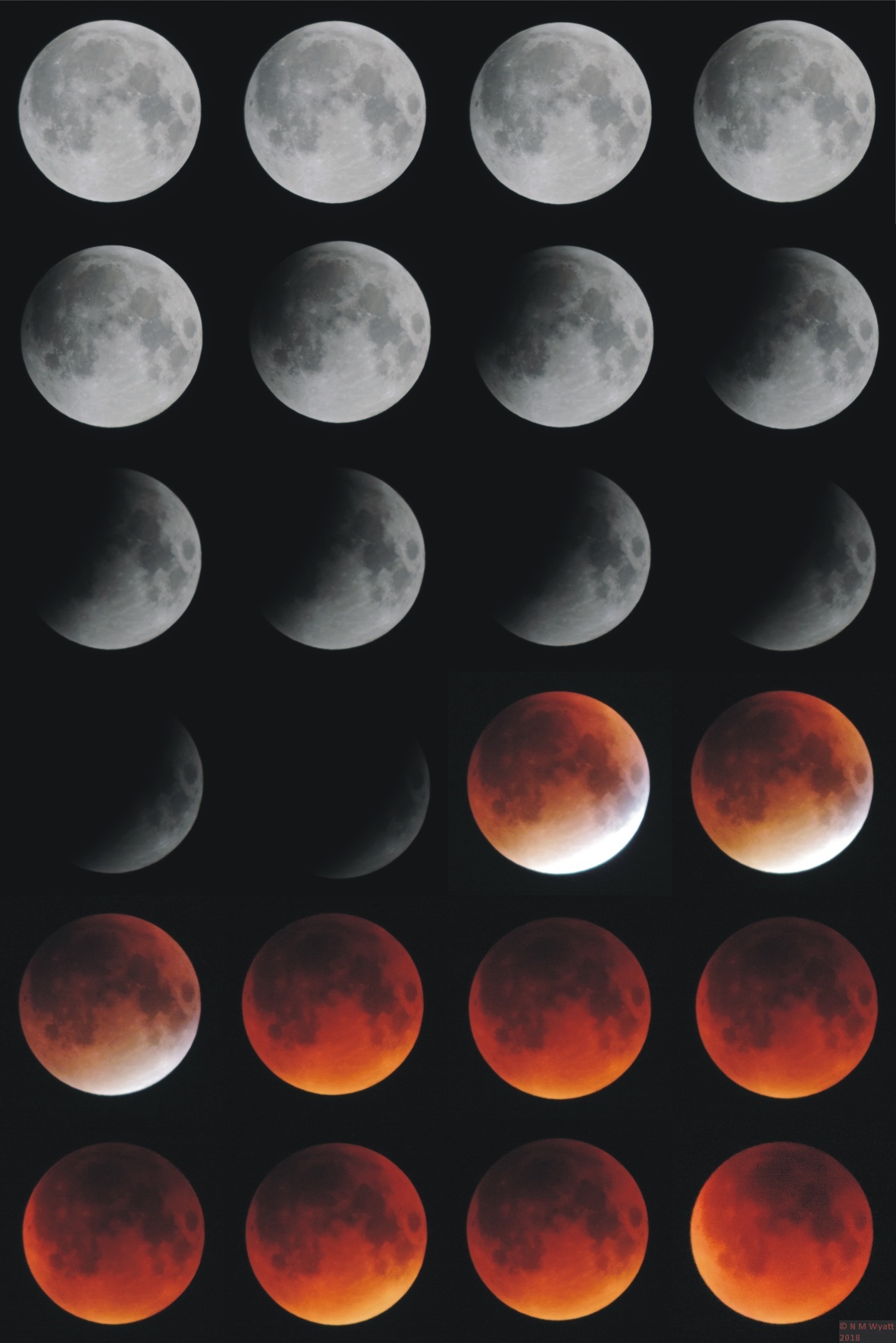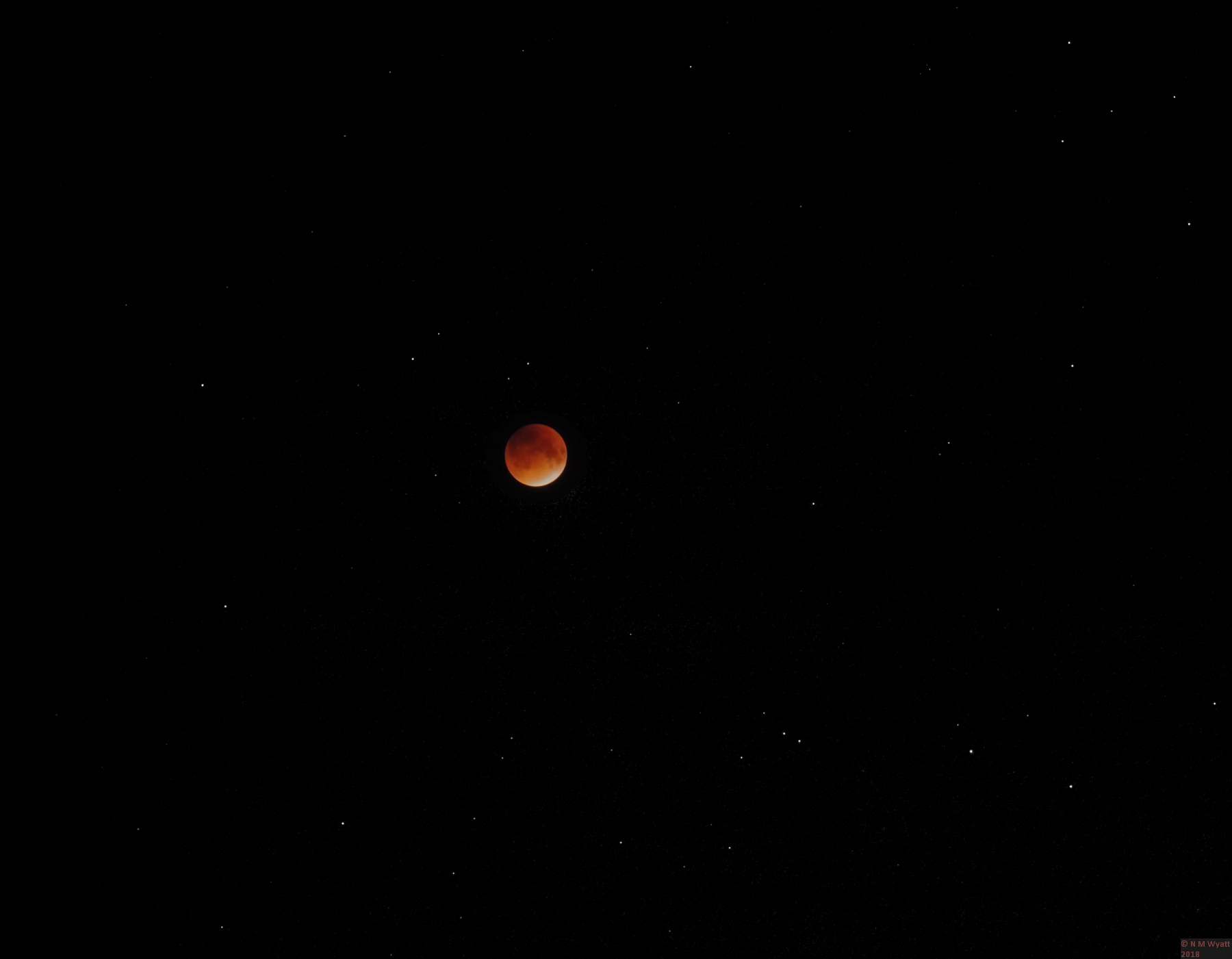On 28 September 2015, there was a stunning total eclipse of the moon. The moon was within an hour of its closest approach to earth during totality, meaning that it appeared larger than usual - a 'supermoon'.
The Eclipse started as a vague darkening at the upper left edge of the Moon, which spread slowly and steadily across the disc.
The shadow of the Earth moves over the moon.
As the shadow covered the whole moon, it became orange to they eye, still bright near the edge, but the camera showed that this bright edge was actually thousands of time less bright than the unshadowed moon. The first image is 1/400 of a second at ISO 100, whilst the next image was a fifteen second exposure at ISO1600.
Now totally in the Earth's shadow, it adopted a dusky red-brown hue.
The above pictures were taken using a six-inch telescope with a Canon Eos 10D, and are stacks of about ten images. The following compilation image uses pictures taken with a Nikon P520 bridge camera. Note that the exposure time and ISO was changed at the point where the illuminated moon disappeared.
The various stages in the progress of the eclipse.
Once the eclipse was total, what had been just a smattering of stars in the sky became a spectacular display, including the Milky Way running through the constellations of Cassieopia and Perseus. This is one of the rare occasions when you could photograph the moon and the stars in the same image. This image is made by stacking the moon and stars from the same set of pictures separately then recombining them. This approach is needed because the moon moves relative to the stars so one or the other is blurred if you do a simple stack. Stars down to about magnitude 6.5 are visible in this image.
To see the stars properly, right click this image and choose 'view image'.
Finally, a close up view of the moon at totality, again double stacked, but using images from the 6" 150PL scope.
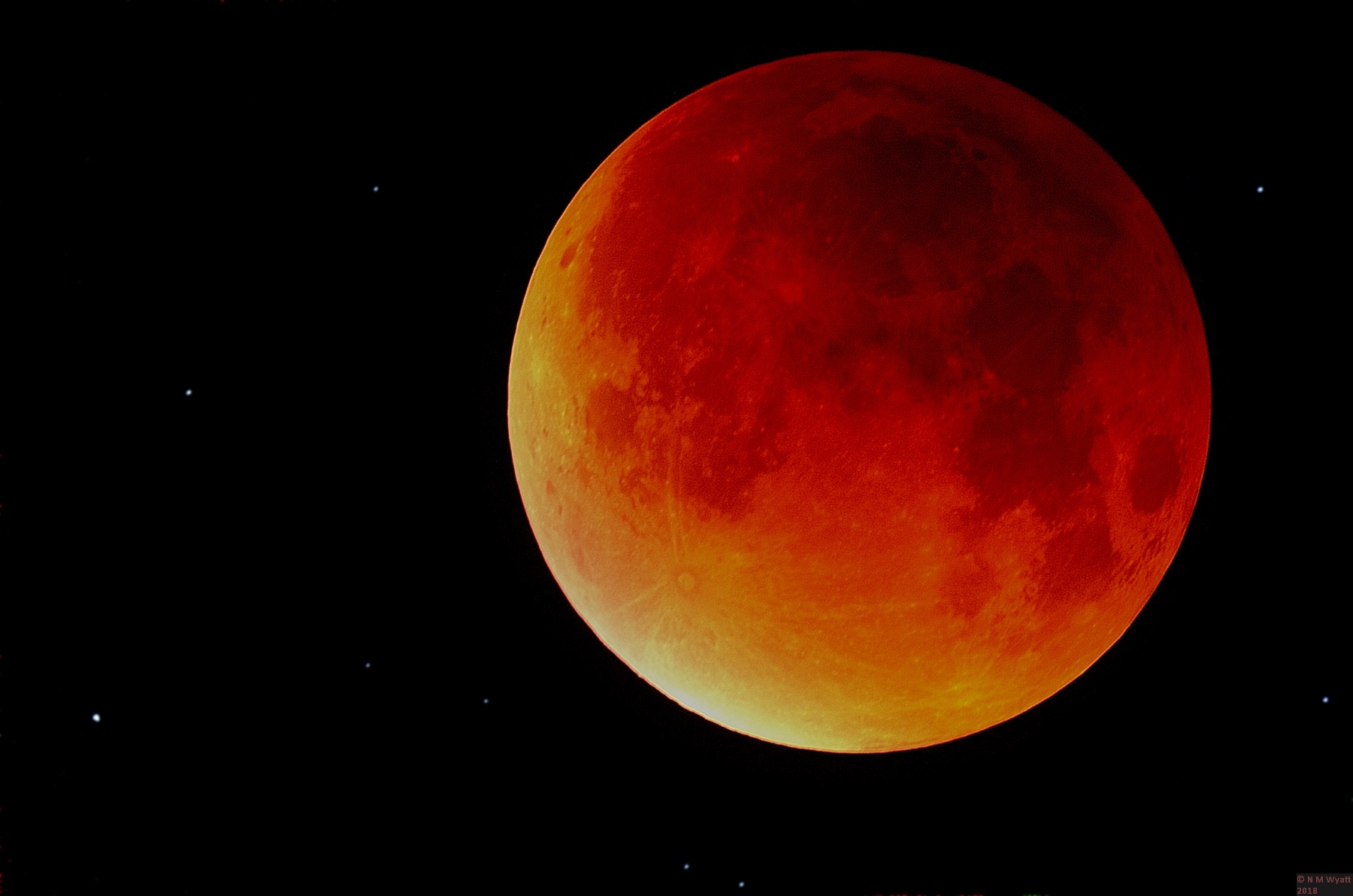 Total Eclipse of the Moon, 28 September 2015
Total Eclipse of the Moon, 28 September 2015

